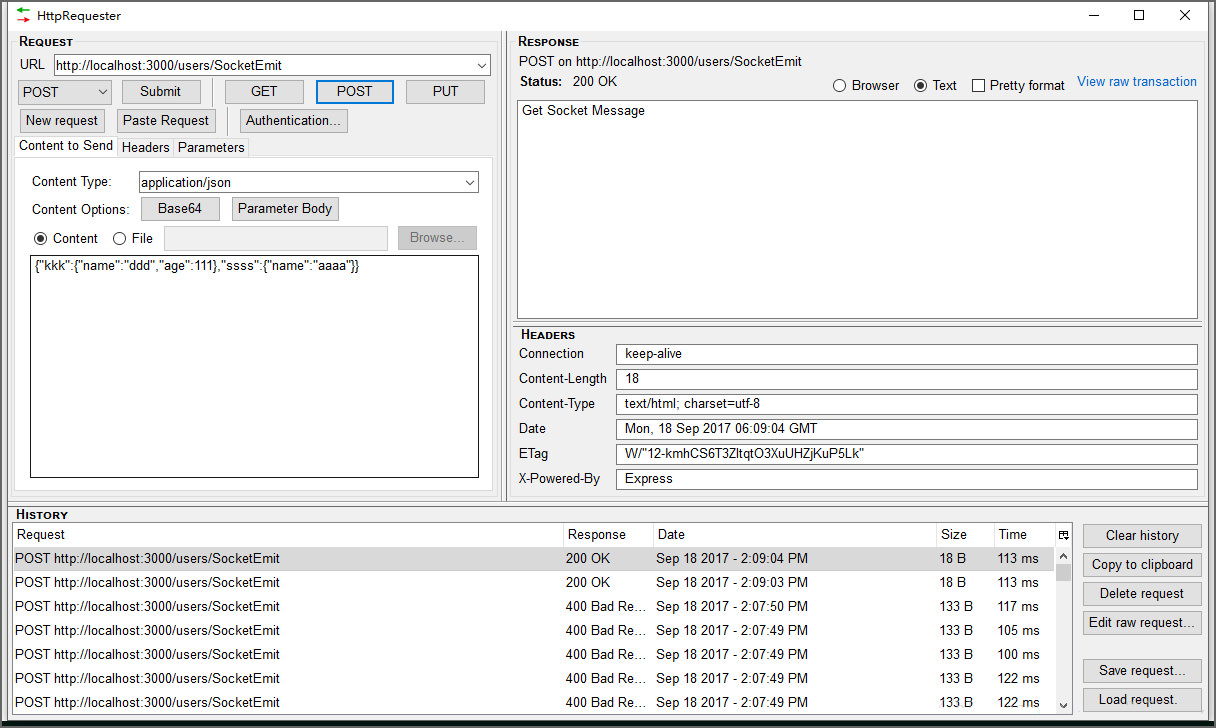
The only requirement to write an integration test is to use the NuGet package. NET 6 with minimal APIs you have to make a small tweak, which you can read about here. NET Core 3) and are using xUnit as test the runner. I get confidence out of it because I mock as little as possible, and I will consume my API in the same way as an application (or user) would. With an integration test, we test the API from the outside out by spinning up the (in-memory) API client and making an actual HTTP request. In my experience, integration tests are also easier and faster to write.
#WINDOWS REST API CLIENT TEST FULL#
To have full confidence in my code, it is integration tests (or functional tests) that I'm grabbing for. It's this practice that I'm not too keen about. Sure, they have their purposes, but often it means that one or more parts of the System Under Test (SUT) are being mocked or stubbed. If you've read some of my other blog posts, you probably know that I'm not a big fan of unit tests.

#WINDOWS REST API CLIENT TEST CODE#
So you don’t need to find your REST controllers to generate requests from them, just start typing the request in the HTTP request file and the IDE will give you suggestions from available URLs.įor more information, see the following topics in the IntelliJ IDEA help:ĭownload IntelliJ IDEA Ultimate today to try out these features.All posts TLDR Version 👀 Just show me the code already When you compose requests manually, IntelliJ IDEA provides completion for URLs based on the REST endpoints defined in your code. If you already have a number of curl requests that you use (for example, in a shell script), you can simply paste them into the HTTP requests file and IntelliJ IDEA will magically convert them to the format used by the integrated HTTP client.

Your project will contain a file with HTTP requests that you or anyone else working with your project can use to validate the web service. If you specify a file that doesn’t exist, IntelliJ IDEA will create it for you. In the Move HTTP Requests dialog, specify the file to which you want to move the requests and select the specific requests to move. Place the cursor on the generated request, press Alt + Enter and select the Move HTTP Requests action. You do not need to manually copy generated HTTP requests from the scratch file to the physical HTTP requests file: there is a context action for that. This file will not be modified unless you edit it directly. In this file, you can compose a set of HTTP requests for validating your web service. To create a physical file with HTTP requests in your project, right-click on a directory in the Project tool window and select New | HTTP Request. Scratch files are not stored in your project. Note that since these are runtime endpoints, the requests are added to a different scratch file, which is named after the specific run configuration (in this case, DemoApplication.http). Click one of them to either execute the corresponding request or open it in the HTTP client. Under Mappings, you will see a list of all the request mappings. In the Run tool window or the Services tool window, select your running application and open the Endpoints tab. If you have the Spring Boot Actuator dependency, it exposes all of your web service endpoints at runtime. For example, you can generate requests from endpoints listed in the Endpoints tool window. IntelliJ IDEA can generate requests from various places and add them to this scratch file. You can easily execute requests from this file during development to verify that a web service is behaving as expected. If you click the Open in HTTP Client gutter icon next to the sayHello() method, IntelliJ IDEA will generate the GET request and add it to a scratch file named generated-requests.http. In the following example, the sayHello() method is annotated with making it a GET request handler for /hello. Wherever you define a request handling method in your code, IntelliJ IDEA displays a special icon next to it in the gutter.

Let’s see how this works in IntelliJ IDEA Ultimate 2020.2. What’s more, you can generate HTTP requests from the source code of your RESTful web service, for example, built with Spring Boot. This means you get full coding assistance for your HTTP requests, including highlighting, completion, refactorings, inline documentation, and so on. The HTTP client in IntelliJ IDEA is built directly into the editor and it is purely text-based. The integrated HTTP client can handle it for you. To test those requests, you could use an external tool, but with IntelliJ IDEA, you don’t need to leave your IDE. A request handler (for example, a REST controller) is where you define methods that handle requests to specific endpoints. Spring Boot is great for developing web services.


 0 kommentar(er)
0 kommentar(er)
